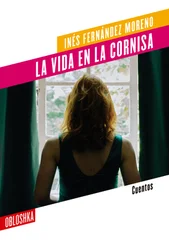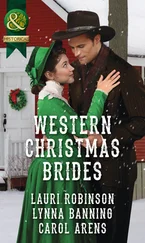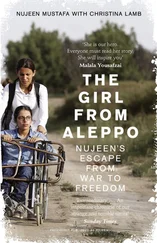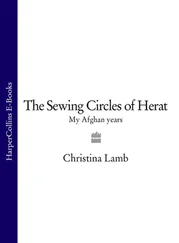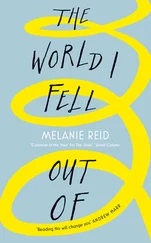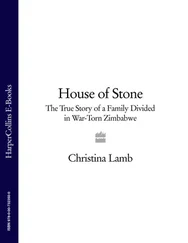They had been struck by a JDAM, one of the satellite-guided 2,000-pound bombs that the Americans had used to decimate the Taliban. ‘The person giving the coordinates to the cave accidentally gave our own coordinates,’ said Amerine.
There were bodies everywhere, and people groaning – it was clear that they had been hit badly. His own thigh was ripped open by shrapnel, and both his eardrums were perforated. Three of his men were dead, as were many of the Afghans. ‘Bari Gul and most of his men were killed in the explosion. My team was finished, everybody had to be medivaced.’
By sheer luck, Karzai was further along the ridge, and was only slightly wounded in the shoulder. ‘Hamid couldn’t believe what had happened,’ said Amerine, who years later would still find it hard to talk about that day. ‘We could easily have killed him too. I just didn’t have it in me to tell him that our own headquarters had done it.’
Amerine later found out that just that morning, the Taliban had sent a delegation to Karzai to surrender Kandahar. ‘The bomb that hit us was probably the last bomb that was dropped in that theatre … at least in that stage of the campaign.’
It was an ominous start.
Still in shock, Karzai was flown into Kabul on 13 December. One of the first people to see him was James Dobbins, anxious to meet the man he had helped get chosen in Bonn. He was relieved, finding Karzai ‘an attractive personality, warm, reasonably open. Many of the qualities we chose him for are what we would later criticise him for. A more forceful person wouldn’t have been acceptable.’
Though Dobbins was happy to have formed an administration so quickly, he worried that there had been no provision for peacekeeping forces, which he was convinced would be necessary if the fledgling government were to work. He told Rumsfeld they needed 25,000 troops, but was firmly rebuffed. ‘He refused even to discuss it.’
His concerns were shared by the British government, which organised a conference in London bringing together fifteen potential troop-contributing countries. But the Pentagon laid down strict conditions. First, what the Bonn agreement had termed an ‘international security force’ would be renamed the International Security Assistance Force (ISAF), to eliminate any idea that internationals would provide security, which it saw as an Afghan responsibility, even though there was no Afghan army to do this. US troops would not participate, as they ‘did not consider peacekeeping a fit role for American troops’. Bush told a meeting of his National Security Council, ‘We don’t do police work.’8 The US would also limit the numbers. ‘We were very wary of repeating the experience of the Soviets and the Brits who ended up looking like occupiers,’ Bush wrote in his memoir.9
On 20 December the UN Security Council approved the deployment of a peacekeeping force numbering between 3,000 and 5,000 troops. It would be led by Britain, which would supply 1,500 troops, commanded by General John McColl.
Afghanistan, emerging from more than two decades of war with armed men everywhere and little effective government, would have just one peacekeeper for every 5,000 people. The last conflict in which the West had been involved was Kosovo, where it had left one peacekeeper for every forty-eight people.
It wasn’t only the numbers that was a problem. The US had insisted that the peacekeepers be restricted to Kabul, giving the US forces of Operation Enduring Freedom free rein to comb the rest of the country for Osama bin Laden and al Qaeda. It was the birth of two parallel forces.
Nobody in Kabul seemed to have heard of their new president-to-be. ‘Who is he?’ people would ask. ‘Do you have a picture?’
Few people were aware that Karzai was already in the city and had moved into the Arg, the presidential palace. Shortly after I arrived in the city I got a message from his assistant Malik, inviting me over.
It was not easy to get in. The guards on the gate were those of Burhanuddin Rabbani, the head of the Northern Alliance, who had moved into the palace as soon as Kabul had fallen, and thought he should be President, so was refusing to leave. They said they had never heard of any Hamid Karzai. Eventually Karzai’s uncle Asis came out to find me and took me inside.
The driveway to the palace was lined with stone lions which had all been decapitated. ‘Taliban,’ explained Asis. He had been Deputy Chief of Protocol for King Zahir Shah, and knew the palace inside out. He showed us into what he called ‘the Peacock Room’, in which the Taliban had laboriously daubed white paint over the heads of the peacocks on the wallpaper. There was a dark patch on one wall, where Asis recalled a beautiful Gobelin tapestry of an English garden scene used to hang – a gift from Queen Victoria to King Abdur Rahman when his son visited London. ‘Afghans were very confused, and asked why did the stupid king put a horrid carpet on the wall, Afghans have much more beautiful carpets on their floors,’ he laughed.
Asis reminisced wistfully about Kabul in the old days. ‘We had lots of clubs,’ he said. ‘Club 25, Club Moon, a bowling alley, dancing at night, and the wonderful Khyber restaurant by the fountain where there was better food than in Italy or France. It’s like we’ve gone back five hundred years.’
Karzai was sitting in an armchair in another room which had a Philips freezer standing incongruously in the middle. The room was as cold as the inside of the freezer – there was just an ineffectual one-bar heater – and he looked dwarfed by the large chair. I was surprised to see him wearing a long, shiny chapan coat in striped green-and-blue silk, and an astrakhan hat. As long I had known him he had always been in jeans and leather jacket, or occasionally beige shalwar kamiz . ‘I didn’t have clothes so someone lent me these,’ he explained. ‘Everything is still in Pakistan.’
I was still cross that he hadn’t taken me on his return to Afghanistan. ‘The conditions were very cold and hard,’ he said. ‘We had to sleep in a shepherd’s hut. It wasn’t like when you and I went in the old days and people fed us in villages.’ He looked thin. Even so he claimed that everything had gone well in Uruzgan, people all coming out to support him. He did not tell me that he had been accompanied by special forces, only that the Americans had flown him on a transport plane from there into Bagram, a military camp just north of Kabul. He had been met by Marshal Fahim, the new Defence Minister, who was astonished to see him alone. Like all warlords Fahim never went anywhere without pick-ups crammed with heavily armed men. ‘Where are your militia?’ he asked Karzai. ‘I have no men,’ Karzai replied. ‘You are now my men.’
That was all very well, but they weren’t his men. They were Tajiks and he was Pashtun. And how could he trust Fahim? It was Fahim who had ordered his arrest seven years earlier when Karzai was Deputy Foreign Minister, and had him interrogated for hours.
I could see his shoulder was bothering him. He told me he’d fallen over in Uruzgan, but wouldn’t go into any detail. Something didn’t add up. Only later did I hear the whole story.
22 December, the day of Karzai’s inauguration, dawned grey. The ceremony took place at the Interior Ministry building just along the road from the Mustafa. Security was tight, roadblocks manned by soldiers and police patrolling in old Russian peaked caps decorated with red and gold braid. They were clutching an assortment of arms, including handheld rocket launchers. Alarmingly I saw one policeman drop his just outside our hotel. Fortunately it didn’t go off.
A motley band in uniforms with braided gold epaulettes played a sort of monotone oompah on the only remaining brass instruments in Afghanistan as dignitaries walked along the specially flown-in red carpet. It was all quite grim, not at all like the installation of the last Western-backed ruler, Shah Shuja, in 1839, when one British soldier and artist present wrote that ‘the wild grandeur of the whole pageantry baffles description’.10
Читать дальше





